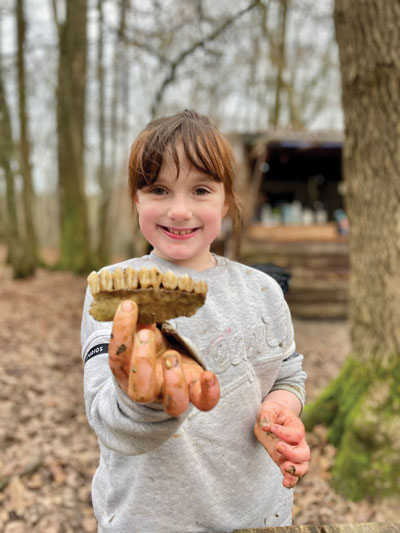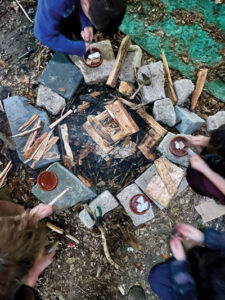
by Melanie Parr
Managing Director, Lymley Wood CIC
So many people are talking about Forest School at the moment, we thought it would be good idea to explain what it’s all about and why so many children benefit from a day out of the classroom, learning in nature. Forest School takes place in a woodland or natural environment and is aimed to support the development of a lifelong relationship between the learner and the natural world. Forest school is not just taking learning outside, it’s a unique and child centred way for children to learn using their innate curiosity about the natural world, animals and the joy of being allowed to get muddy!
The Forest School movement started in Denmark in the early 1950s as a result of a parent taking her own children and neighbours’ children to gather together in a nearby forest – an unofficial form of daycare which proved popular among other parents in the community. Arriving in the UK in 1993, today Forest School happens all around the world and in the UK has its own association (www.forestschoolassociation.org) that oversees the quality of provisions and provides training for Forest School leaders in order that the settings provide a well-planned, safe and inspiring curriculum for the children attending Forest Schools.
Forest School is a child-centred inspirational learning process, that offers opportunities for holistic growth through regular sessions. It supports play, exploration and supported risk taking. It develops confidence and self-esteem through learner inspired, hands-on experiences in a natural setting. This means that children attend regularly throughout the school year and the curriculum uses the changing seasons and the natural space to support learning. There is also a focus on helping children navigate the social and emotional aspects of learning and education, and for this reason, is a go to option for parents whose children may struggle at a regular school, or for those children who have special educational or additional needs.
Some schools, especially primary schools, have added Forest School to the timetable but nothing is quite the same as the children accessing a woodland space rather than a school field or small area in the school grounds. Forest School is not a ‘subject’. Rather, it’s that all subjects can be taught in a fun and meaningful way but outdoors, Forest School style, instead of in a classroom. If we want to achieve a holistic education that uses play and nature rather than prescribed separated ‘subjects’, then freedom to be allowed to learn at their own pace and guided by a child’s own natural curiosity is key. Maths outcomes can be achieved through counting dug up worms or collected leaves or acorns just as well as with traditional classroom resources. Art lessons using self-made natural dyes and paints, or by creating some ‘land art’ is a fun way to learn creativity. PE on a rope swing, tree climbing or an adventure playground in the trees is a great physical ‘lesson’. Learning history through digging in mud for ‘archaeological remains’ or making a traditional tool using stones and sticks – it really brings learning to life.
A quality Forest School provider will also support children to learn how to manage their own risk and understand their own physical abilities or limitations. This builds safety skills, resilience and a sense of achievement as the children have freedom to undertake personal and physical challenges in a way where they can make their own decisions and are not distracted by parents’ fear or safety concerns.
Sussex has some great Forest Schools and a setting such as Lymley Wood can also help with families who need to access funding for children who have an EHCP, as their Forest School is an alternative education provision.
If your children are home educated or on part-time timetables then looking at Forest Schools is a fabulous  option to engage them in their own education.
option to engage them in their own education.
Mel Parr runs Lymley Wood CIC based near Five Ashes, in East Sussex. For further details please feel free to call 07951 257813 or visit www.lymleywood.co.uk











